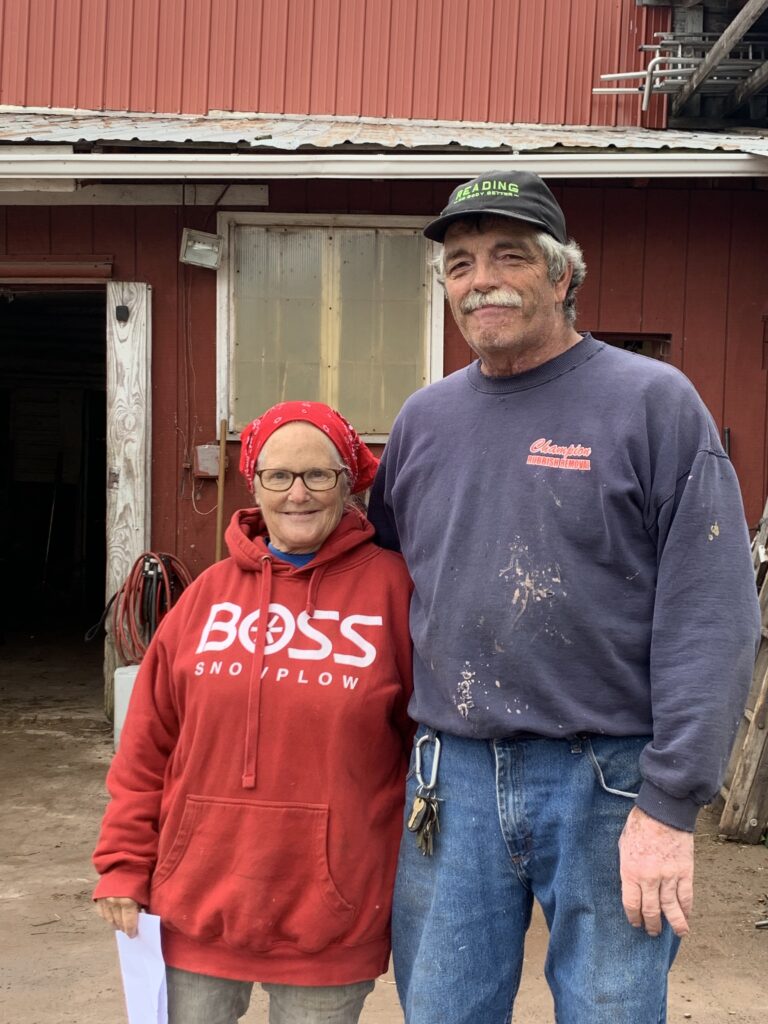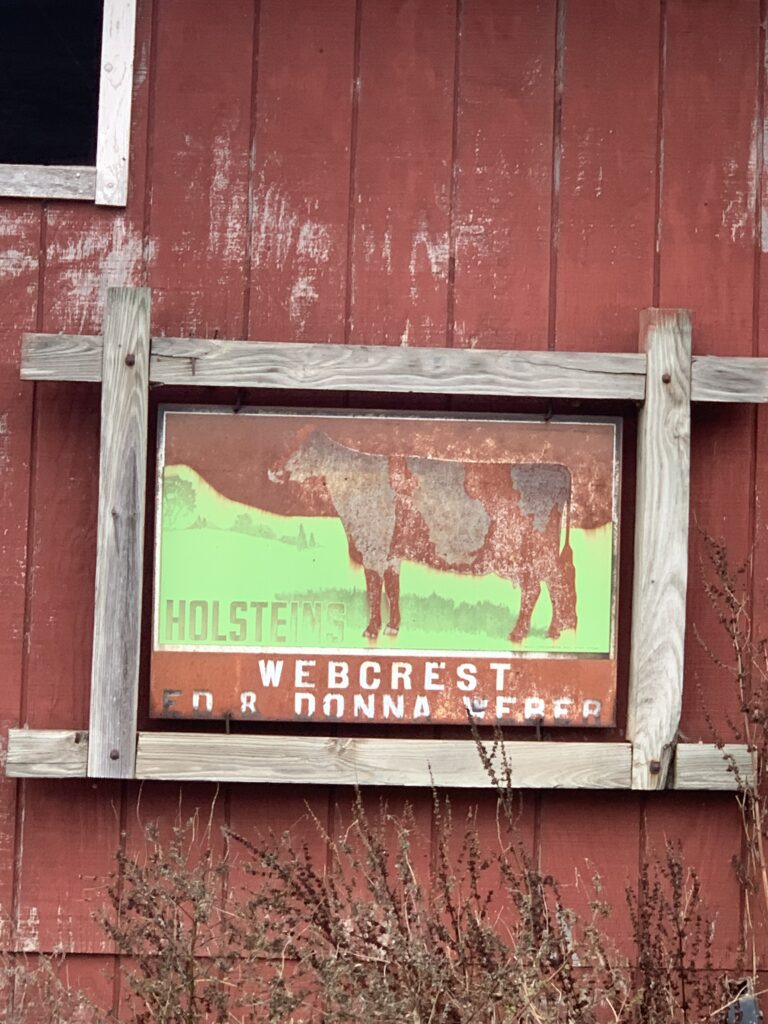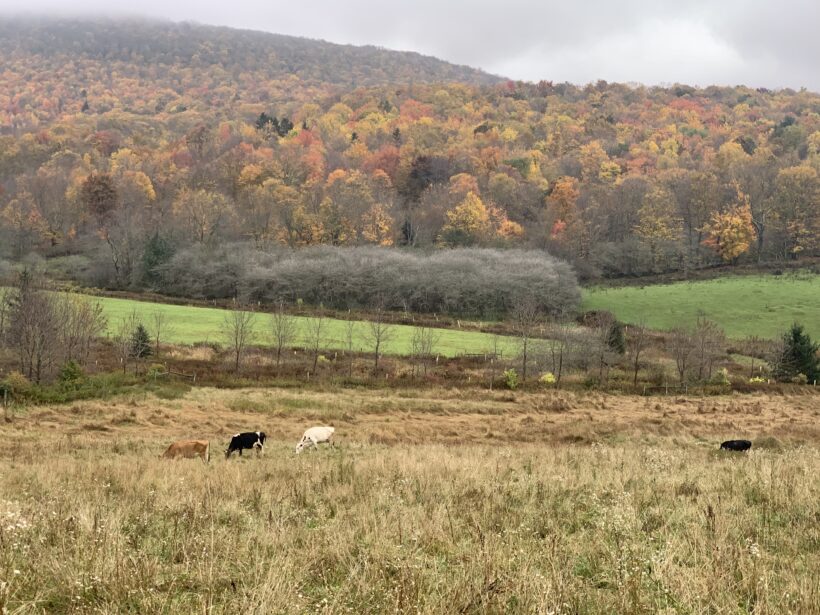 Webcrest Farm is a 275-acre dairy farm located at the headwaters of the Little Delaware River in the town of Bovina, and has been a part of the Watershed Agricultural Program since 1996. The farm is owned and operated by Ed and Donna Weber, along with their son and daughter-in-law Cody and Carrie Weber. The dairy herd consists of 50 milk cows and 46 replacement youngstock. The Weber’s manage an intensive rotational grazing pasture system and grow all of their own forage consisting of alfalfa/grass hay and haylage, as well as corn silage. Webcrest Farm is enrolled in the Precision Feed Management Program and the Nutrient Management Credit Program. The farm property also has a WAC Conservation Easement.
Webcrest Farm is a 275-acre dairy farm located at the headwaters of the Little Delaware River in the town of Bovina, and has been a part of the Watershed Agricultural Program since 1996. The farm is owned and operated by Ed and Donna Weber, along with their son and daughter-in-law Cody and Carrie Weber. The dairy herd consists of 50 milk cows and 46 replacement youngstock. The Weber’s manage an intensive rotational grazing pasture system and grow all of their own forage consisting of alfalfa/grass hay and haylage, as well as corn silage. Webcrest Farm is enrolled in the Precision Feed Management Program and the Nutrient Management Credit Program. The farm property also has a WAC Conservation Easement.
Calf Housing
Currently, there is a calf housing structure BMP under construction that is a Repair & Replacement BMP, which is being constructed on the site of the original facility built in 1996-97. The original calf housing BMP was a greenhouse structure designed with a 10-year lifespan. With proper operation and maintenance by the Weber’s, it remained in service as an effective BMP for 25 years. The new structure is a timber frame building with individual pens for calves 0-3 months old and group pens for calves 4-6 months old. This is an important water quality BMP because it reduces the risk of pathogens entering the NYC water supply. Water quality protection is achieved by providing a clean, dry, well-ventilated environment for calves, which improves overall health, thereby reducing the shed of pathogens such as cryptosporidium. Another key feature of the new calf housing is the inclusion of a covered manure stacking area. This allows the manure from the calves to be separated and static piled, where it can naturally heat up to destroy the pathogens. Calf manure can then be spread in locations identified in the Nutrient Management Plan where there is low risk of runoff to a watercourse.
Precision Feed Management
For several years it has been a Precision Feed Management goal of the Weber’s to feed corn silage year-round, especially in the summer grazing months. When corn silage is digested  in the cow’s rumen, it cools the animal down, in comparison to grass silage, which heats the animal up when digested. This makes corn silage a very beneficial feed in the warmer months.The starch in corn silage also allows the protein in grass to be utilized more efficiently. After establishing growing enough corn to feed year-round as a goal, the Webers worked with their planner to make it happen. This year they planted a few more acres of corn, had a great growing year, had equipment readily available to them, and now have plenty of corn silage to feed over the next year. We look forward to seeing how this positively effects protein efficiency and milk production in the next grazing season.
in the cow’s rumen, it cools the animal down, in comparison to grass silage, which heats the animal up when digested. This makes corn silage a very beneficial feed in the warmer months.The starch in corn silage also allows the protein in grass to be utilized more efficiently. After establishing growing enough corn to feed year-round as a goal, the Webers worked with their planner to make it happen. This year they planted a few more acres of corn, had a great growing year, had equipment readily available to them, and now have plenty of corn silage to feed over the next year. We look forward to seeing how this positively effects protein efficiency and milk production in the next grazing season.
2021 Ag Program Stats: 258 Active Farms •• 150,000 Acres •• 47 Educational Events •• 1,436 Projected Cover Crop Acres
Read more from the 2021 Annual Report here.

